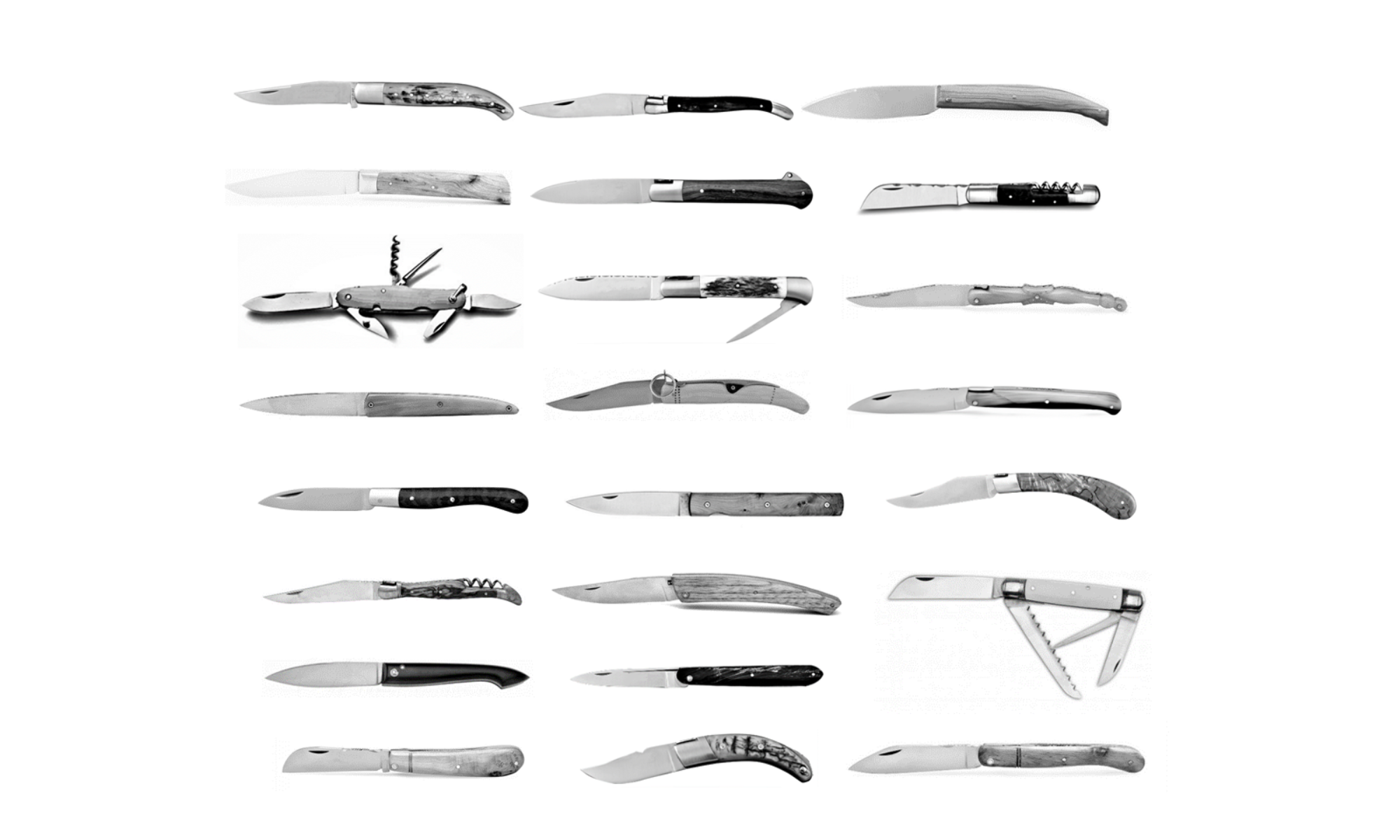
Leon Coursolle, born 1877, was an intinerant merchant and ended up marrying the daughter of one of his vendors, a cutler named Fedit who was making novelty knives with bone sides and some simple scrimshaw.
Disappointed by his father in law’s production, he devised a new type of pocketknife, inspired by German production in Solingen.

Germans were the precursors of novelty knives with brass or aluminum handle by the end of the 18th century, notably owned by the carriers. Some were also made in France in early 19th century (see the history of the Napoleon knife) https://knives-of-france-blog.com/napoleon-knife/.

The handle of the knife, traditionally made of a liner and a cover (wood, horn, bone etc.) would be replaced by a single piece of brass, saving material and time for the assembly.
But what the customer was losing in refinement and aesthetics, Leon was making it up by putting a nice stamp on the brass.

Leon met a minter from the National Mint that made him the first matrix for his handles. The Coursolle sujet knife was born and the first one made in 1902.



The knife quickly became famous and sometimes called “yellow knife” for the color of the handle.

Leon trademarked first a wrench in 1905, then adjustable wrenches in 1926.


More recently Jean-Marc Couperier, now owner of the Coursolle cutlery, added his own vision of the Laguiole and Thiers knives with, obviously, brass handles.

How to make a Coursolle sujet knife


The side are first cut from a sheet of brass then power hammered in the dies where the embossing appears, some of the classics are the hunter, fisherman, spinner, venus etc.





The blade is classically made in carbon steel XC75, drop forged and water quenched. Some models are now available in stainless steel.


The knives come, since the beginning, in 4 sizes: 105mm, 90mm, 80mm and 70mm and in a variety of versions from a single blade to a 6 blades competing with the famous SAK. Each version has a number, the one attributed by Leon Coursolle a century ago.

The knives are then assembled using steel rivets, everything is still made like a 100 years ago, all by hand.

The only concession to modernity: a foot operated cutter is used to cut the rivets and the rivet heads are rounded by a power hammer.

Each brass side receives a clear coating.
Each piece is then inspected by the senior cutler to check the action and fix some defects (re-align the blade to seat in the handle once folded, adjustment of the kick to correct a proud tip etc.)



The production is true to the tradition and original manufacturing process, a new Coursolle is almost a NOS piece.

Find some on knives-of-france.com






































